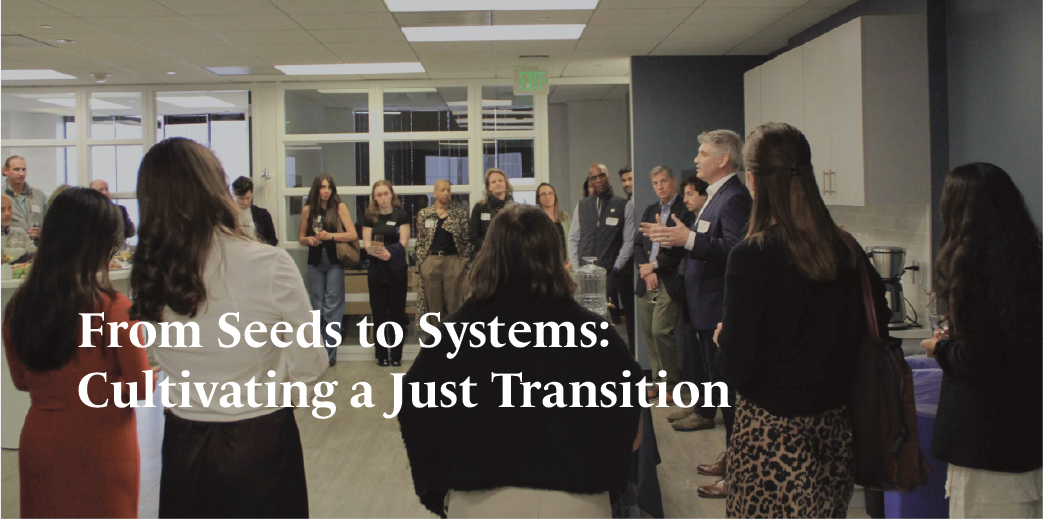Investment & Pensions Europe, By Jonathan Williams
November, 2014
In the wake of a recent G8 working group on impact investing, Jonathan Williams examines how pension investors view strategies with a social purpose
The debate over financial and non-financial return factors has long been at the heart of the socially responsible investment debate, no more so than when considering the impact of holdings.
Impact investing could be seen as a noble quest that can only be undertaken by charities or those doling out financial grants. Some people assume that a good impact investment will likely improve the lives of those around the asset but offer no financial return.
The New York-based Global Impact Investor Network (GIIN) has sought to challenge this assumption in recent years, and received help in 2013 when the UK launched the Social Impact Investment Taskforce during its presidency of the G8. The first report of the taskforce, Allocating for Impact, was published in September, and argues it is time for the asset class to find its “formal place” within portfolios.
“Impact investments do not just protect and enhance an investment’s value through better day-to-day environmental, social and governance (ESG) practices,” the report says. “They are distinct in their focus on defining a societal challenge upfront, setting objectives to deliver an intervention and measuring how well they do.”
The report’s authors, Clara Barby of Bridges Impact+ and Mads Pederson of Swiss banking group UBS, summarise the appeal of impact investing as: the growth in the investible universe for values-driven investors, saturated with the millennial generation that wants to “marry profit with purpose”. Second, the demand for diversification from traditional, return-driven investors – such as pension funds – that can explore the asset class once track records develop.
Finally, and most importantly for those looking for above-average returns in the current climate, is identifying new growth markets.
“Moreover, in an economic downturn, impact investments focus on addressing the real needs of a real economy,” the report says, highlighting healthcare and affordable housing as areas that can have strong demand despite a slowing economy.
It is not social housing, but more broadly the residential property sector as a whole, that appeals to Philippe Desfossés. The chief executive of the €20bn ERAFP, the supplementary scheme for civil servants in France, sees property as the “low-hanging fruit” in terms of making a difference.
Selected pension fund impact investors
- $25m (€20m) investment by Norway’s KLP in micro-finance project with government development vehicle Norfund. Local authority scheme also joined Norfund in offering NOK35m (€4.2m) financing to solar farms in South Africa.
- US investor TIAA-CREF has $700m social impact investment programme offering funding for low-income housing, childcare programmes and healthcare.
- Five UK local authority funds with £30bn (€38bn) – Greater Manchester, West Midlands, East Riding, West Yorkshire, Merseyside and South Yorkshire – have launched a £152m social impact fund.
He notes that the carbon output of the sector is second only to that of the energy market, but could easily be reduced by refurbishing buildings if politicians were willing to back projects. “It’s better to be on TV with some wind farms behind you, because journalists are very happy and it makes the news.”
However, Desfossés doubts that large-scale institutions can ever truly become impact investors, as he views the best-in-class approach pursued by his fund as the only “no-nonsense” way for those with assets above €10bn to invest. “The real challenge is not to invest too much in the 5%, even though the 5% is important,” he says.
“The risk is that by focusing too much on the 5%, politicians and government will forget that the main challenge is to make the 95% change.”
Desfossés views are at odds with those of some other large institutions, albeit in the foundation sector. As part of GIIN’s efforts to demonstrate the feasibility of impact investing, not simply as part of a diversified portfolio but as a whole, it turned to the US-based KL Felicitas Foundation (KLFF).
The $38bn (€29.2bn) foundation, which invests 90% of assets in impact portfolios with Sonen Capital, admits that social investing should be acceptable even when delivering below-market returns. There are other benefits to impact investing, the foundation and manager jointly argue in the report monitoring the evolution of KLFF’s impact portfolio.
One of these is the lowering of reputational risk. Where UK pension investors are still averse to investing in, say, residential real estate for reputational reasons, KLFF argues that the impact investing actually lowers its risk by exposure to organisations that have an eye on both short and long-term matters.
The foundation has enjoyed some notable success, with its return-based US public equity portfolio – which transitioned from excluding companies to screening firms based around ESG criteria since inception in 2006 – returning 4.22% over the six-year period to the end of 2012, slightly above the S&P 500’s overall 4.12% performance during the same period.
The fact that KLFF’s portfolio is a pared-down version of the S&P 500 underlines another important claim – impact investing does not have to include particularly adventurous holdings outside of the norm.
Speaking at a recent conference organised by RobecoSAM, Anders Thorendal of the Church of Sweden was at pains to emphasise the fact. “You don’t need a separate mandate for impact, it is [about] how you work with your investors to manage the impact.”
The CIO, responsible for SEK6bn (€660m) of the church’s non-pension assets, cited the example of holdings in the Philippines-based Manila Water Company that was not an impact holding, but was resulting in positive societal returns.
The firm engages directly with its customers to reduce water leakage, and aims to improve the quality of water provided to the country’s second-largest city without raising prices as to make the utility unaffordable.
Mike Jensen, CIO of the UK’s £5.5bn (€6.9bn) Lancashire County Council Pension Fund paints a similar picture of impact investment, driven by interest in appropriate assets rather than leading with an intent to bring about change.
He recalls that, upon joining the local authority fund five years ago, its 2% strategic allocation to infrastructure was going unused, but now stands at 6.5% invested assets, with “a bit of a renewable energy theme”.
“That’s not us seeking out renewable energy only, but the deals that have come that have been most appropriate to our risk characteristics have tended to be in those sectors,” he says, citing exposure to landfill, solar and wind farms and biomass plants.
One of the fund’s investments in solar power was in aid of a local solar farm, financed through a 23.5-year, £12m bond that had the dual benefits of offering attractive returns while also supporting a local co-operative.
The next step for the sector, according to the Social Impact Investment Taskforce’s report, is to tackle the perceived barriers of fiduciary duty to investment, an area already addressed in the UK after a review by the Law Commission found returns should not be the sole reason for investment.
Additionally, there is a need to quantify the actual impact of impact investments. This should be assisted by the launch of the Ireland Strategic Investment Fund, the country’s new sovereign development fund and successor to the old National Pensions Reserve Fund, which will be tasked with monitoring the economic impact of its investments.
The real challenge will be in winning over the institutional market, presenting track records for assets that provide both societal benefits and viable returns. Investing for impact might then be on the way to becoming mainstream.
See the full article on Pensions & Investments Europe.


